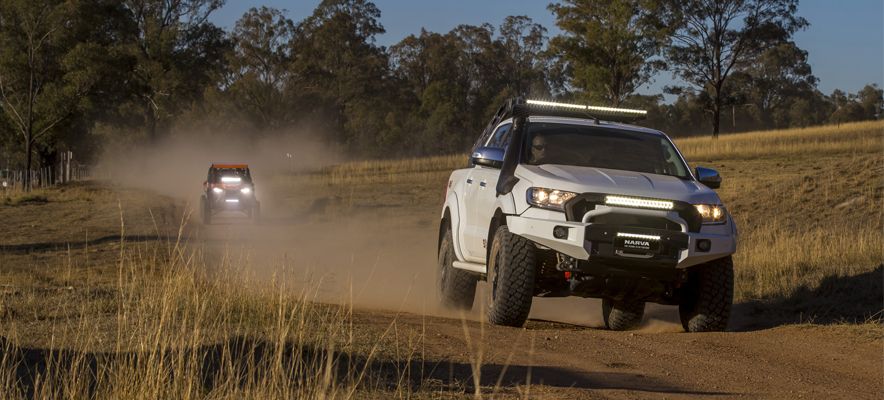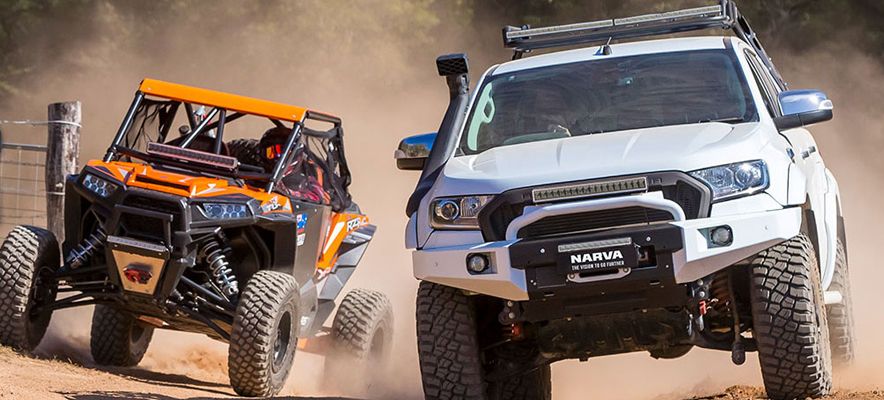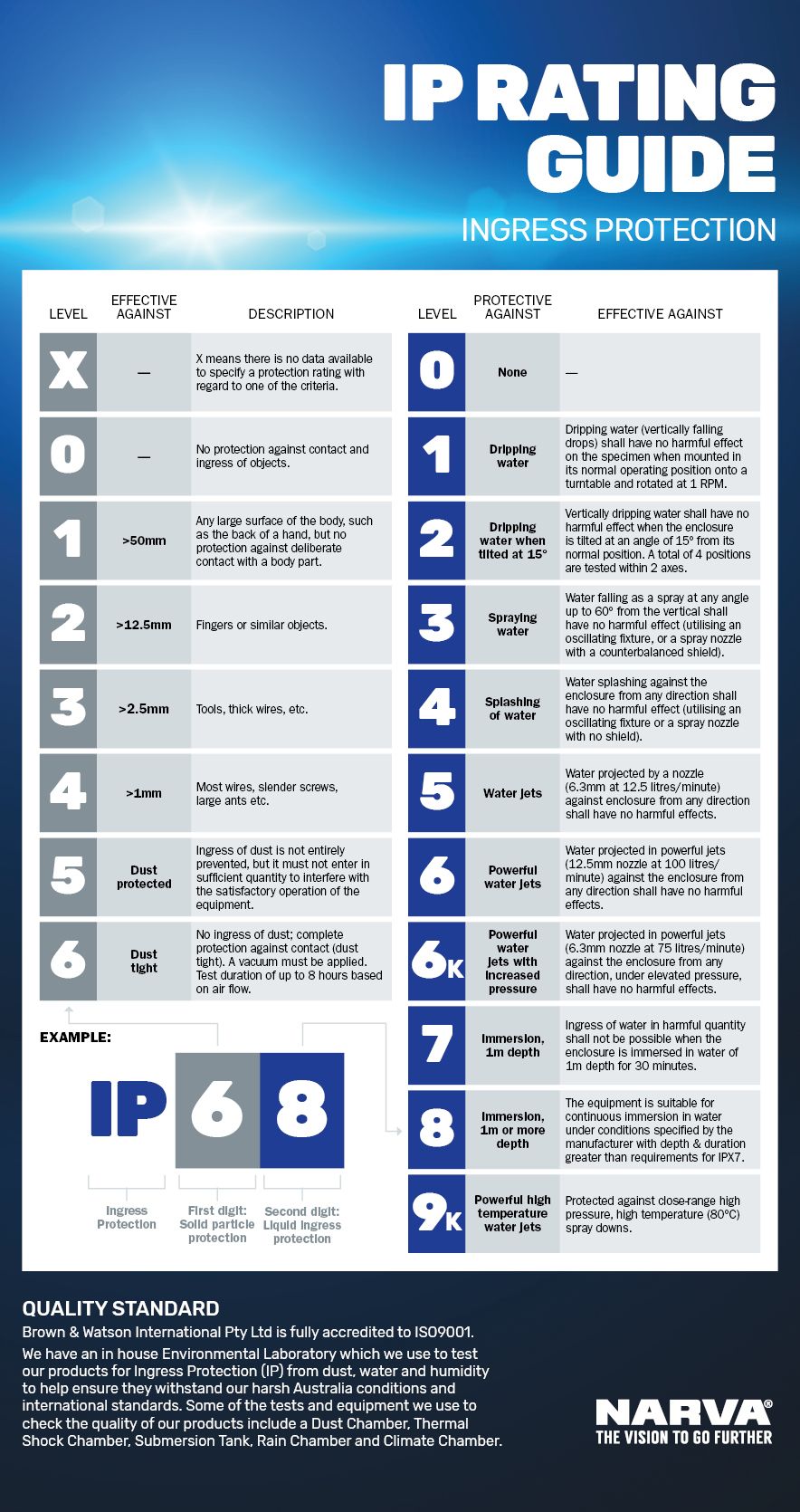What is an IP Rating?
— October 29, 2020 | 2 min read
In our last blog post we explained some of the important terms related to L.E.D lighting, such as lux and lumen. With the huge variety of L.E.D lights on the market, it’s important to understand these so you can determine if an L.E.D light is suitable for your intended use.
Many consumers compare lights on the usual performance numbers, but there is one term unrelated to light output which can mean the difference between seeing in the dark and losing your investment. When it comes to surviving unfavourable weather conditions, river crossings or dust storms, the IP rating is our most useful figure. Many lights and other electrical equipment are fitted in roofs, on bull bars, trailers and on other surfaces that brave the elements on a daily basis.

Firstly, the IP acronym refers to “Ingress Protection”. This means the level of solid and liquid particle protection offered by an electrical product, such as an L.E.D light bar or work lamp. If you see ‘IP’ on a box or product, it is telling you that there is a level of protection from fluids, dirt and the like from entering the equipment and potentially damaging electricals or affecting performance.
If a manufacturer is being honest about their IP ratings, they will have properly tested the equipment to determine the level of ingress protection. In the video below you’ll see some of the specialised equipment that NARVA use to torture test our products, ensuring they meet the standards we claim. You may notice these IP ratings suspiciously absent from bargain-basement knock offs.
Back to the numbers! IP is always followed by a number and sometimes letter combination. For example: IP68. The number itself is not 68, but rather 6 and 8 as individual figures. This is because both numbers have their own important meaning.
The first digit refers to the ingress of solid objects, such as dust and pebbles, whilst the second digit is relevant to ingress of liquids like water.
The IP table (below) explains what each number represents, so you can make an informed decision about the appropriate IP rating required for your application.
An IP00 rating means that solids and fluids can easily seep in and interfere with the product. If you have something with this rating, you won’t be using it for boating or off-road driving (hopefully). In comparison, an IP04 rating means the product is not protected from solids, but can withstand water spray.
In the example of NARVA’s ALS flood lights, many of which come with an IP67 rating, these lights are 100 per cent protected from dust. From a liquid protection perspective, they are able to be immersed in water to a depth of one metre for approximately 30 mins.
The NARVA Ultima Explora L.E.D lightbar range comes with two ratings - an IP68 as well as the IP69K.

It might seem strange to have two ratings, but this means the product has passed two tests. The top rating of IP69K does not mean it has passed all of the rating tests beneath it.
As you can see from the IP chart, while both ratings have the top tier solid particle protection, the product can withstand continuous immersion in water based on the conditions set by the manufacturer, and is also protected against close range high pressure, high temperature spray downs.
The good news is that the entire range of NARVA light bars, driving lamps and work lamps come with very high IP ratings, so you can be sure these NARVA products won’t let you down when it comes to reliability in water and dust.
If you are unsure whether a product’s IP rating will suit your needs, feel free to contact NARVA customer service on 1800 422 422 and our team will help you decide.

